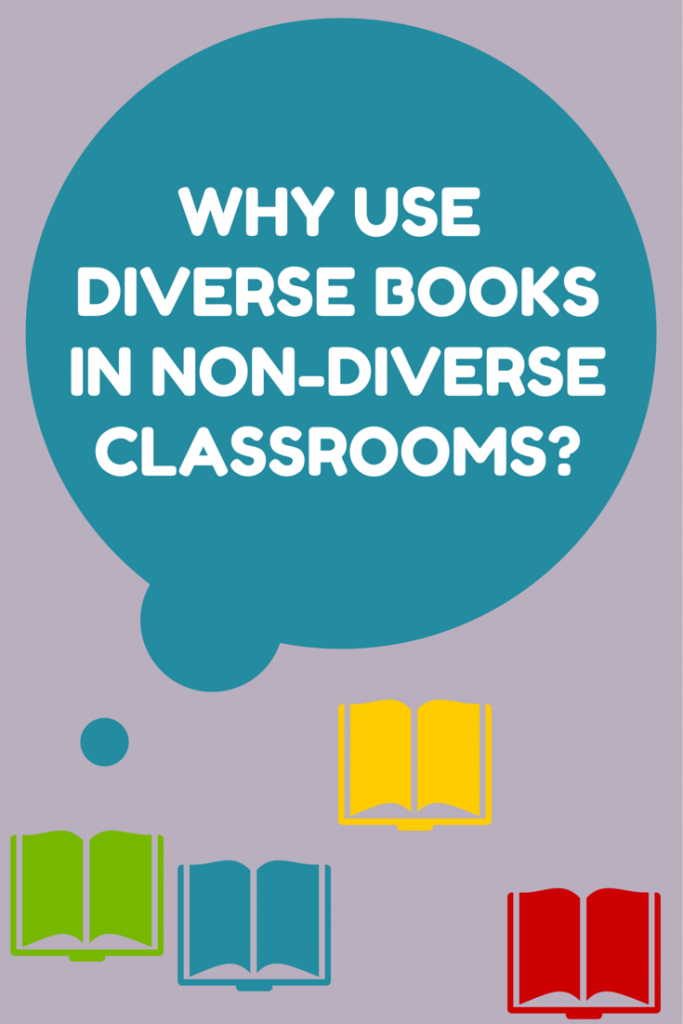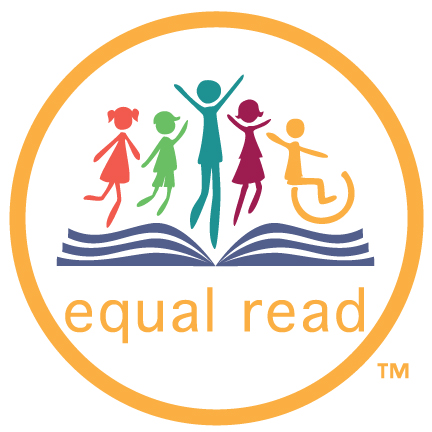In this guest post, Taun M. Wright, C![]() EO of Equal Read, lays out some of the arguments for using diverse books in all schools, regardless of student demographics.
EO of Equal Read, lays out some of the arguments for using diverse books in all schools, regardless of student demographics.
DeAvian was a disengaged student, more interested in socializing than academics. Her school had well-known books like Ramona but it wasn’t until her Big Sister gave her a book with an African-American girl on the cover that suddenly, “DeAvian’s eyes opened wide with excitement and a smile filled her face. She held the book tightly, looking up as if to say: ‘Here I am, at last!’” Now, DeAvian continues to read, and her academic performance has improved dramatically. The impact of representative literature can be profound.
In a year with so much important attention to discrimination, the call for diverse children’s books is clear. However, diverse books aren’t just essential to students from minority or marginalized backgrounds. We need diverse books in schools with students representing fewer racial groups just as much as we need them in more diverse schools.
Research shows that the less contact students have with people from other racial groups, the more likely they are to retain higher  levels of prejudice. While equity and inclusion are necessary, especially for those of us too long without them, social change is more likely to happen when everyone understands how they will benefit directly from increased diversity and, what’s more, why their ability to embrace the benefits of diversity will be a key determinant of their future success. Here are a few key benefits to adding diverse books to a collection, regardless of the demographics of students:
levels of prejudice. While equity and inclusion are necessary, especially for those of us too long without them, social change is more likely to happen when everyone understands how they will benefit directly from increased diversity and, what’s more, why their ability to embrace the benefits of diversity will be a key determinant of their future success. Here are a few key benefits to adding diverse books to a collection, regardless of the demographics of students:
- INCREASED ACADEMIC PERFORMANCE: In their book Identity-Safe Classrooms, Drs. Dorothy Steele and Becki Cohn-Vargas show that “Identity-Safe Classrooms” result in increased achievement for all students, not just those from marginalized groups. Stereotype threat – anticipating being negatively stereotyped based on negative attributes associated with an identity group you represent – has a direct impact on achievement for students from all identity groups. Having many diverse books can offer a “density of cues” to counter stereotypes and reduce stereotype threat, increasing identity-safety for all students.
- ENGAGEMENT IN READING: Everyone agrees reading ability is a key predictor of future success. The key route to engaging kids in reading is to offer them books they find interesting and kids want to read about what they don’t know, not merely what they know. As part of its Classrooms program, Equal Read assesses students’ interest in diverse books, as well as their feelings of identity-safety and other measures. Students overwhelmingly answer, “I like reading about people that are different than me” and say that “books about kids that are different than the kids in my class are interesting.”*
- BETTER PROSOCIAL DEVELOPMENT: In 2012, Loris Vezalli and his colleagues demonstrated that adolescents who read a book concerning intercultural topics showed not only a reduction in stereotyping and more positive feelings about students representing identities other than their own, but also an increased desire to engage in future contact. Clearly, diverse books are a powerful tool for improved prosocial development.
- COLLEGE AND CAREER READINESS: Educators at all levels recognize the need for students to develop key “21st Century Skills.” While their lists may differ around the edges, all include collaboration and communication as essential 21st Century Skills. As the total number of Latino, African-American, and Asian students will be over 50% this fall, all students will need to be able to collaborate and communicate with people from multiple identity groups, if they are to succeed. Businesses are well aware of research that shows diverse teams are more creative, innovative, and productive than homogenous teams. Silicon Valley companies, for instance, are now investing significantly in recruitment efforts geared to diverse employees. A recent study by professors from Cornell, UC Berkeley, Washington and Vanderbilt Universities even demonstrated that “political correctness” has a positive influence on creativity. Students accustomed to respectfully collaborating and communicating with people from many different identity groups will be better prepared for college and career success.
Just because a school’s population is not very diverse, does not mean it should be similarly restricted in the books available to its students. Kids like great stories. All kids deserve to read the most engaging books available, books that expand their imagination of what’s possible by telling a wide variety of stories, featuring characters with differences beyond phenotype (observable differences) to include different ethnicities, nationalities, languages, gender expression, family structures, abilities, sexual orientations, socioeconomic backgrounds, education levels, religions and beliefs, ages, body types, learning styles, and experiences.
Through its Classrooms program, Equal Read creates broadly diverse book collections that are balanced for gender and representative of all of a classroom’s learners, offering teacher professional development and parent education about the role diverse books can play in increasing cultural competency.
Because every child deserves an equal read.
*Note: Equal Read also surveys parents and teachers, and overwhelmingly, both groups say they want to know more about diverse children’s books. Clearly, they already recognize the benefits of diverse books to the students they serve, yet it is difficult for them to find these books – this is no surprise considering how few children’s books feature diverse characters. We’re also working on ways to help parents and teachers more readily find the most outstanding books featuring diverse characters through Equal Read’s Books program.
 Taun Wright founded Equal Read in 2013 as a nonprofit organization to increase diversity in children’s literature, so all kids can “see themselves and a world of possibility in the books they read.” A former teacher, nonprofit consultant and administrator, and a parent and grandparent of a multi-racial family with multiple and varied abilities, nationalities, ethnicities, family structures, socio-economic backgrounds, languages, sexual orientations, ages, body types, education levels, learning styles, and experiences, she has first-hand appreciation for the wonders of different identities and the value of diverse children’s books in sharing them.
Taun Wright founded Equal Read in 2013 as a nonprofit organization to increase diversity in children’s literature, so all kids can “see themselves and a world of possibility in the books they read.” A former teacher, nonprofit consultant and administrator, and a parent and grandparent of a multi-racial family with multiple and varied abilities, nationalities, ethnicities, family structures, socio-economic backgrounds, languages, sexual orientations, ages, body types, education levels, learning styles, and experiences, she has first-hand appreciation for the wonders of different identities and the value of diverse children’s books in sharing them.


